Features of Digital Boards
- The Clone and Create method involves categorizing tasks based on global scope items and parent tasks. Subsequently, a board is automatically generated based on this categorization. The tasks under this can be seen under active boards or C & C boards based on its status.
- The Custom method allows users to create their own boards, along with tasks and assigning them to stakeholders or themselves. This is particularly useful for creating personalized to-do lists. The tasks under this can be seen under active boards or custom boards based on its status.
Workbook - Child Board indicator
- Under Workbook (Timeline of Project Hub), the indicator number in the Work Breakdown Structure (WBS) column represents the number of child boards created for that task.
- On clicking the indicator number, the user will be able to view the child boards and govern the process activities.
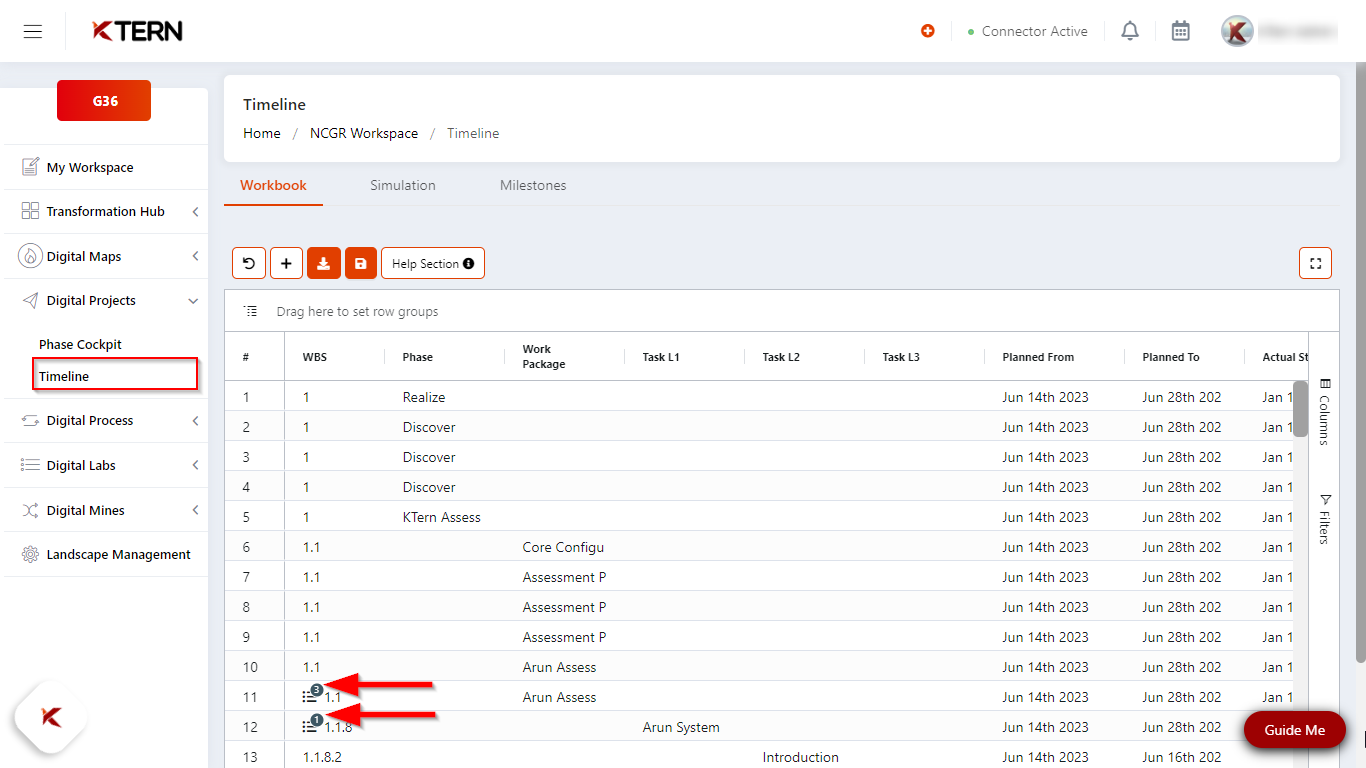
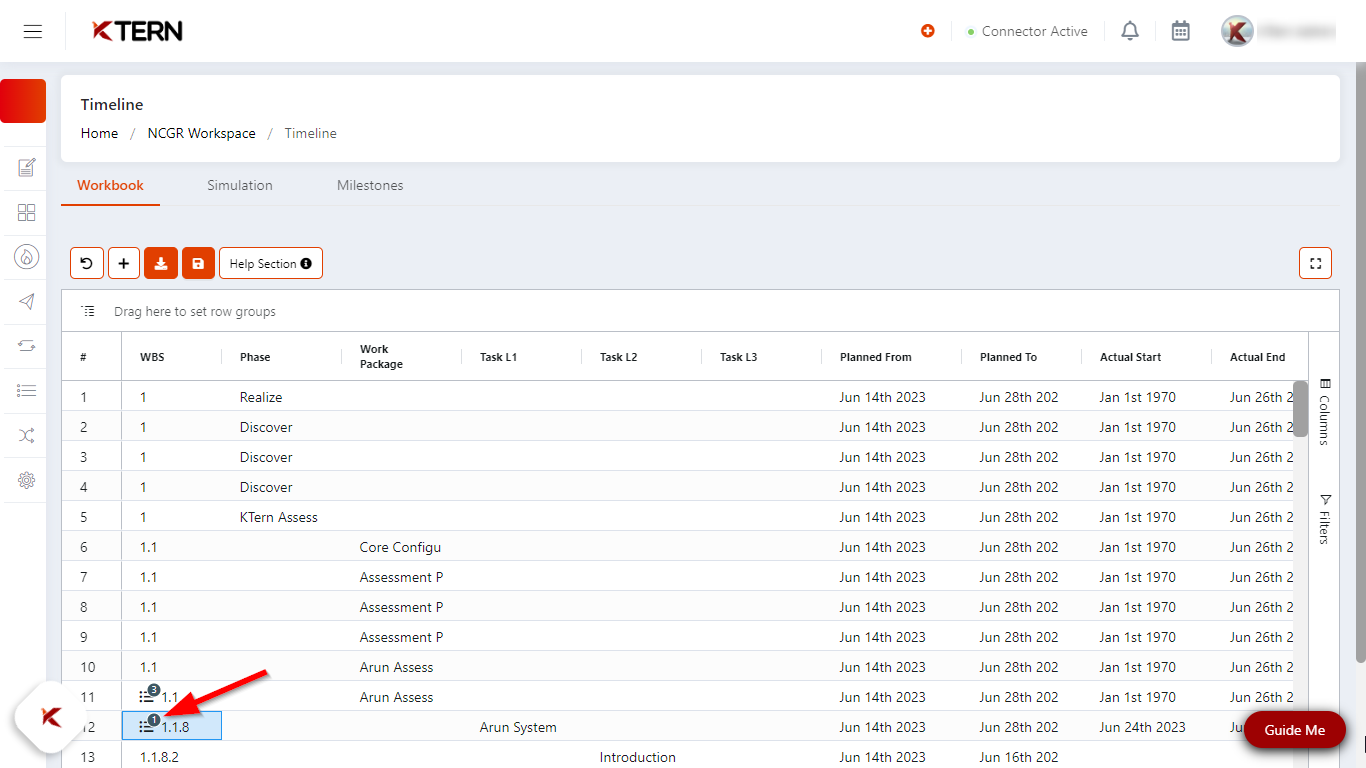

Boards - Color categorization
- By clicking the color pixel circle, the color of the boards can be customized according to the user’s wish.
![]()
Updation of tasks - Inline Editing
- The users have no difficulties on visiting to multiple locations for updating the status of activities. Since, the status of the task can be inline edited as shown in the below image.
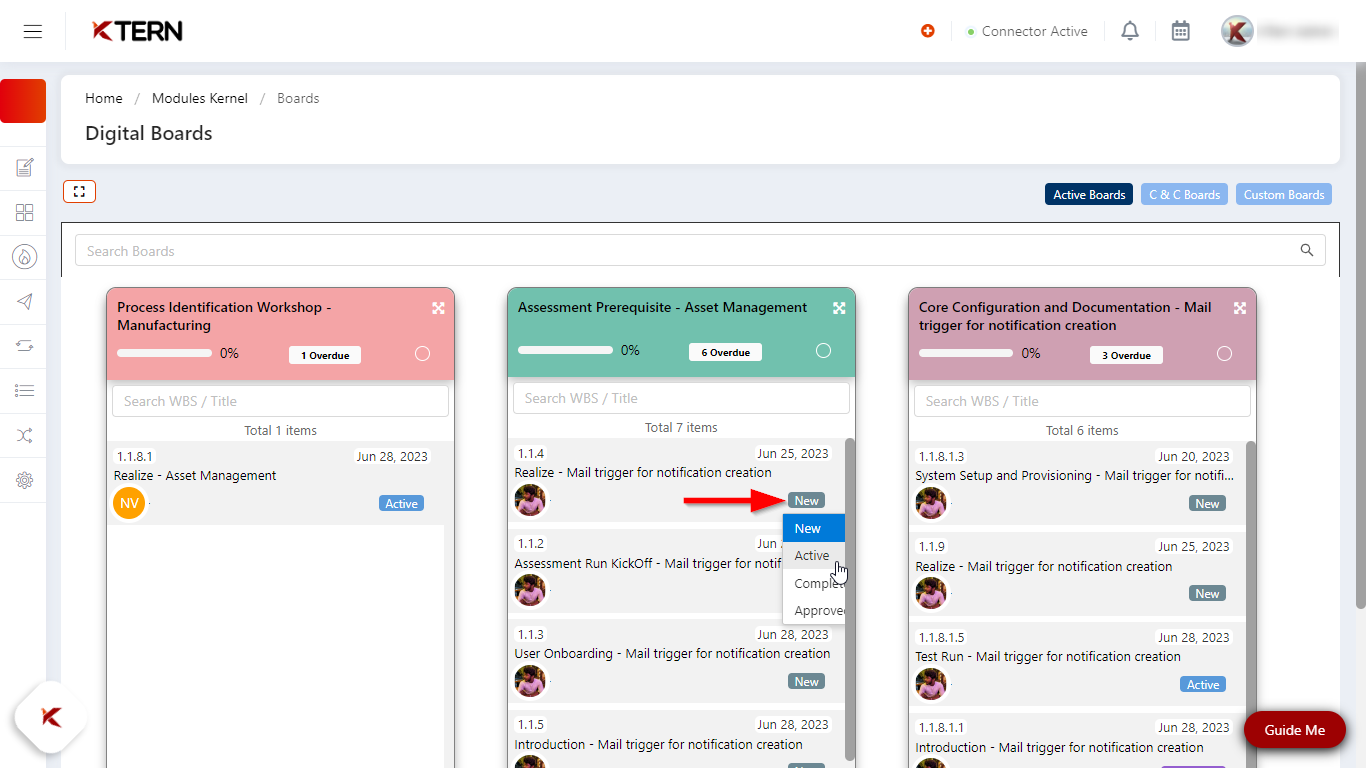
Board - Expanded View
- To have a better view of all the tasks under a board, click the expand icon present over the top right corner of each board. There also, the user could save the changes and could download the list of informations about the tasks too.
- Unless the tasks fall within the current phase, the boards will remain inactive and won’t be falling under active boards.
![]()
![]()
Progress Governance
- There is a progress indicator showing the progress of each board, which typically takes into account on how many tasks have been completed under that particular board.
- It is evident from the image below that the progress of all the boards can be viewed collectively, eliminating the need to access each individual board.
- It saves time and promotes standardized project management practices.
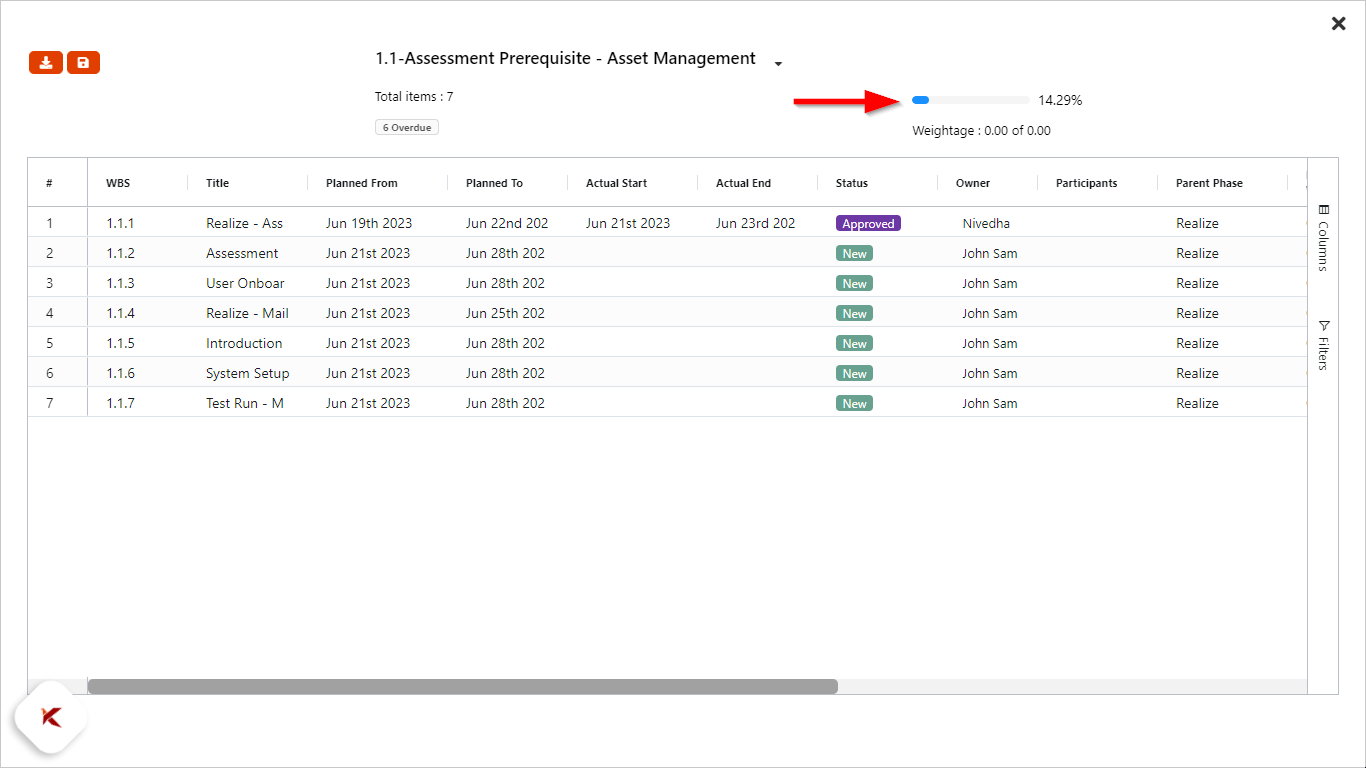
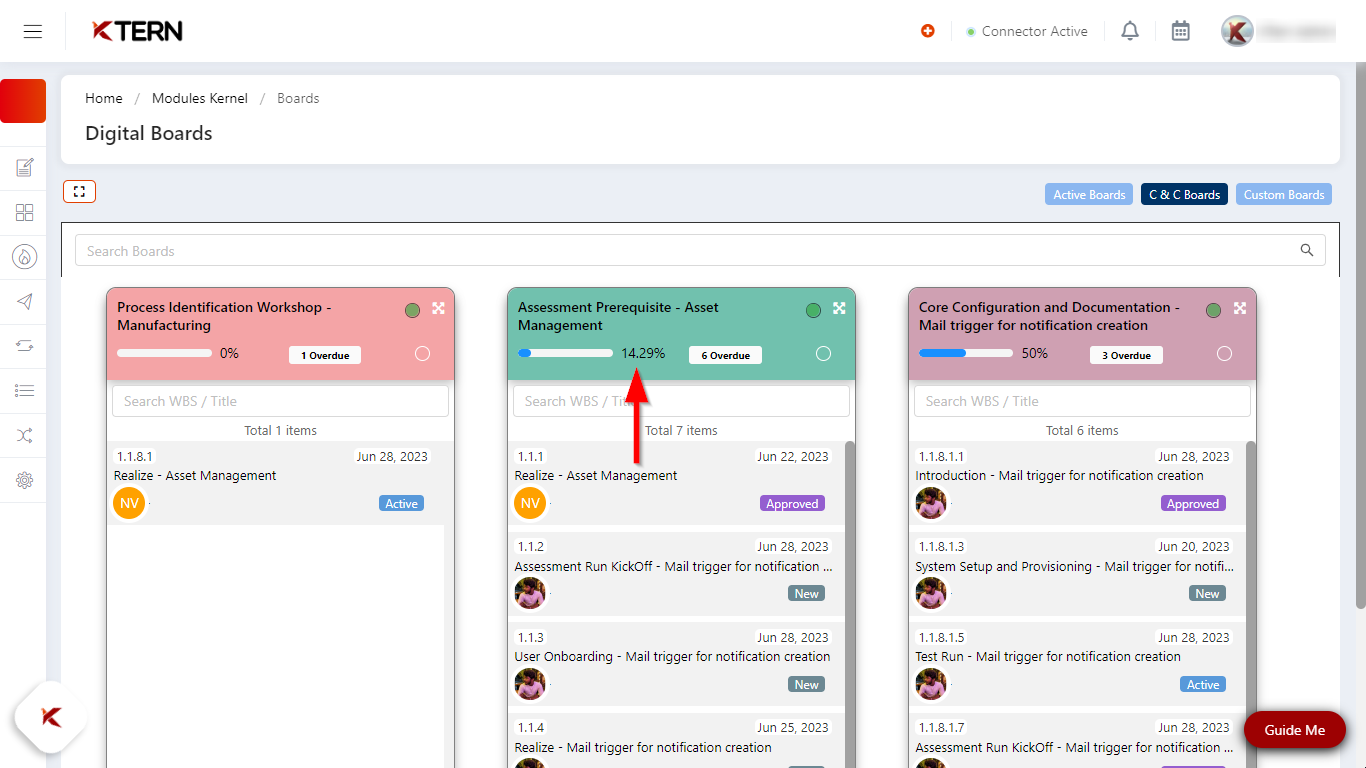
Boards - Active indicator
- For boards that are in active state, green color indicator will be visible on the board.
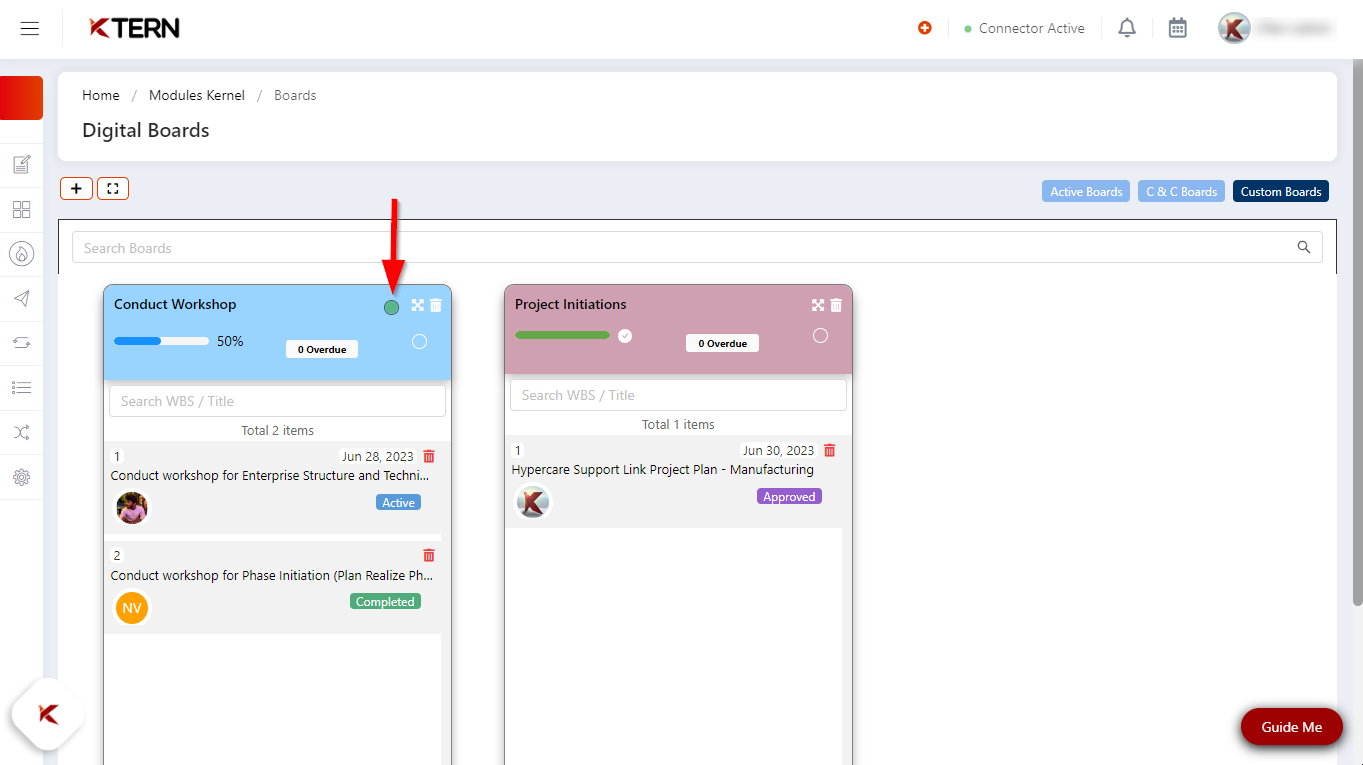
Active boards Criteria
- The criteria for active boards is as follows:
a. Boards that have tasks in an active status.
b. Tasks occurring in the current phase within the board.
c. Boards that have overdue tasks.
Filters and Configurations
- Users can apply filters to narrow down their view by expanding the board, thereby making it easier to locate and focus on relevant information.

Creation of Custom tasks
- The users can create multiple cards and also multiple tasks can be created in a card by clicking the “+” icon present inside the card to create a task.
- Here, the user shall give a name to the new task, set the duration and assign the task to stakeholders.
- Click the “x” icon to discard a task during its creation.

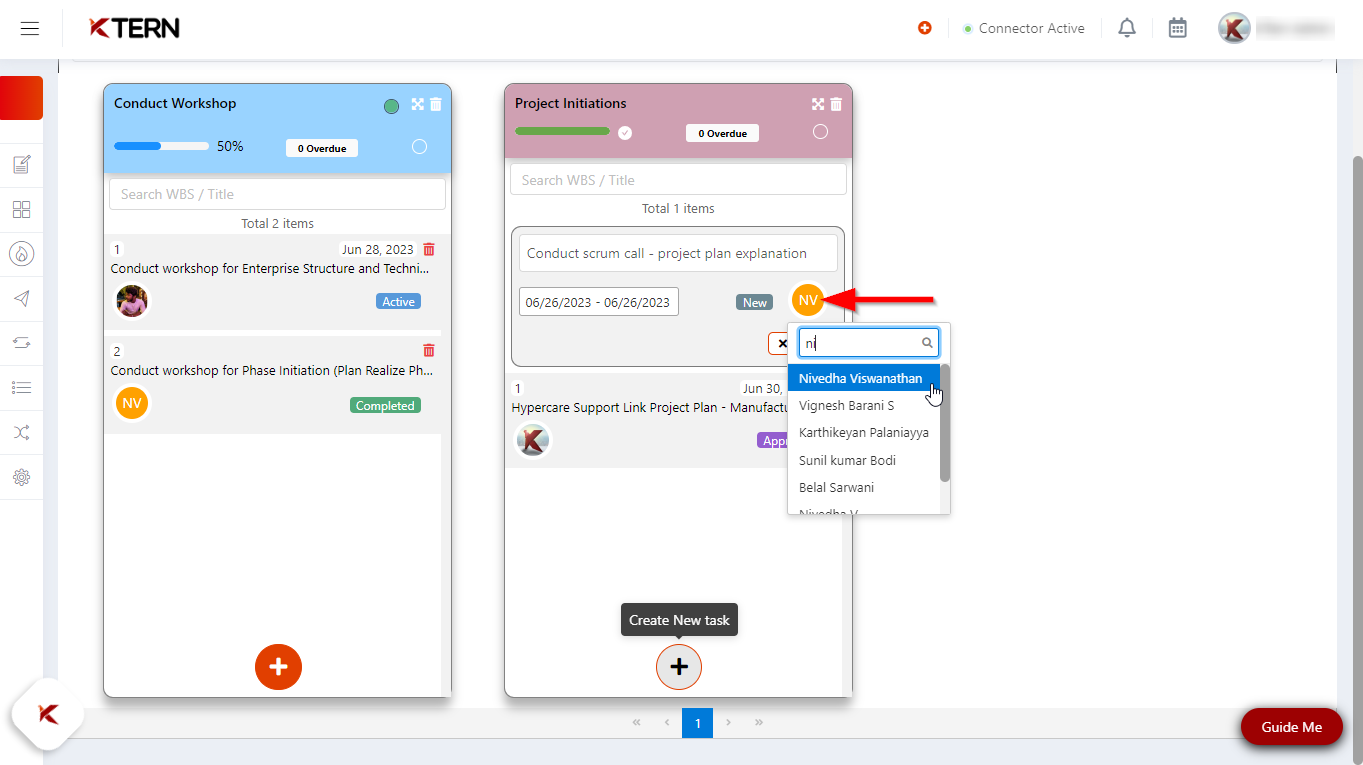
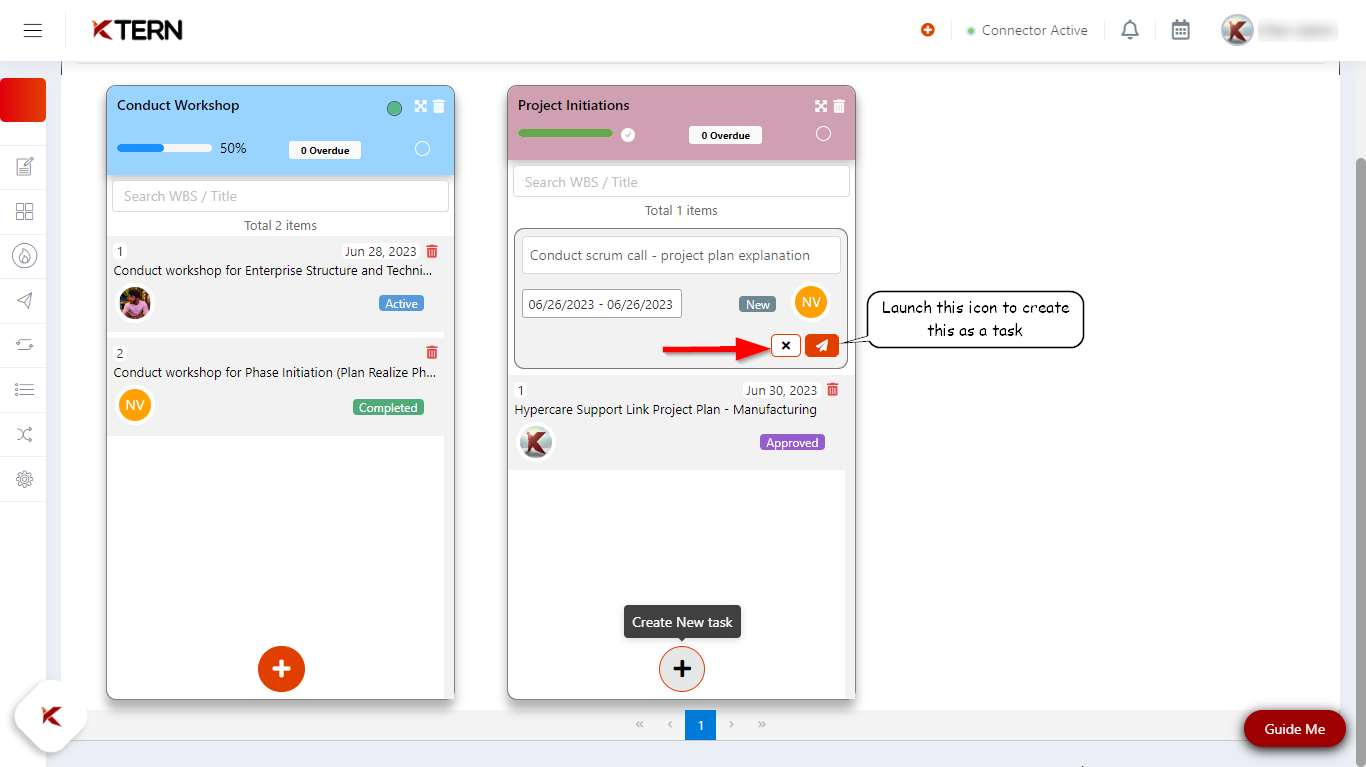
Quick Search
- KTern provides robust search and filter capabilities within the digital boards. Users can quickly search for a specific board by using its name.
- While searching for a task inside a board, the user could search by the task name or by WBS.
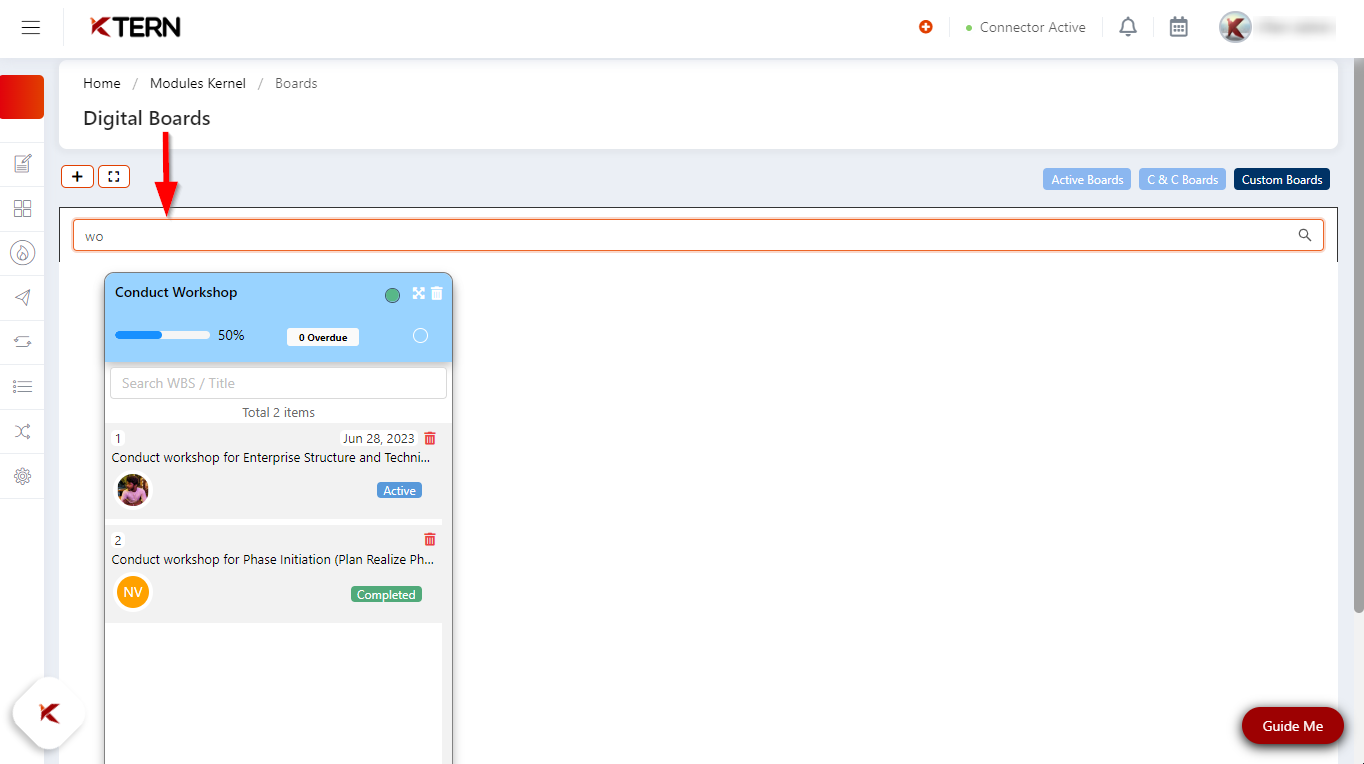
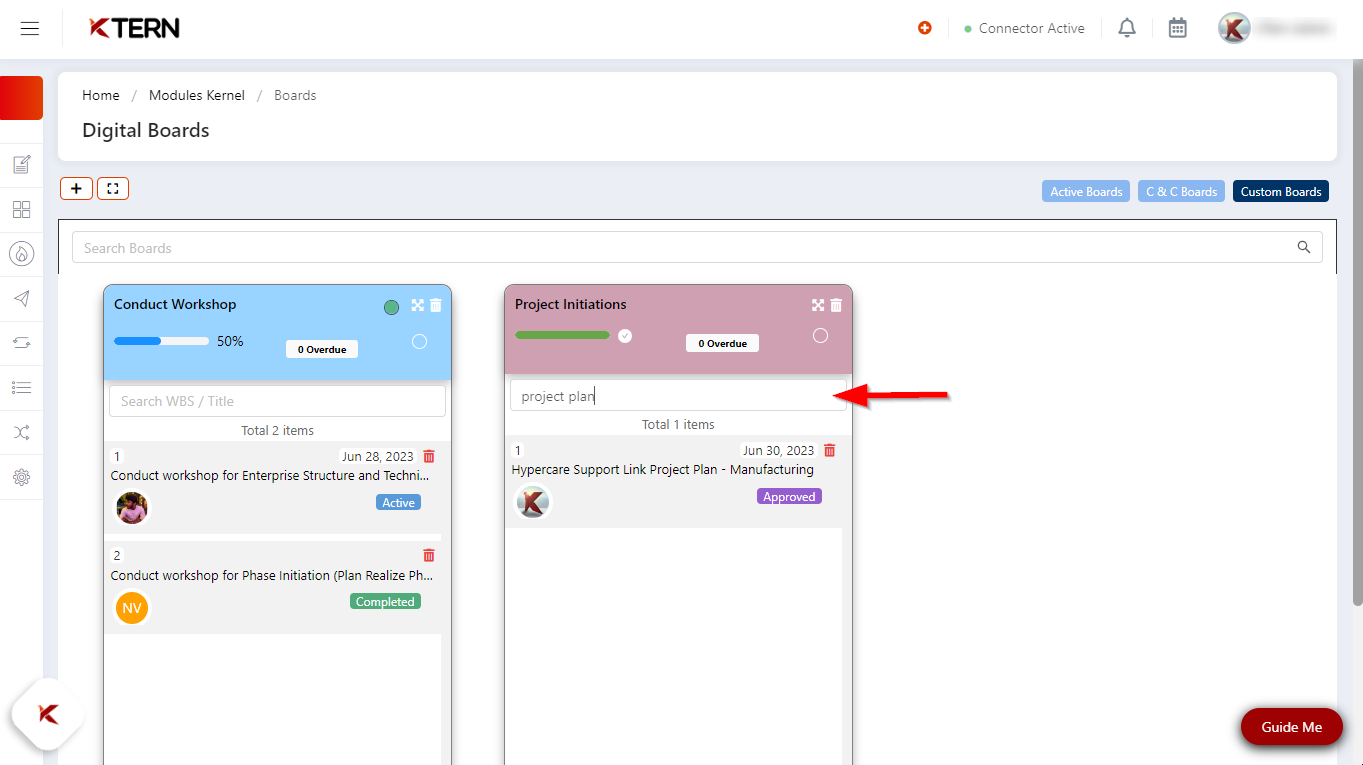
Overdue indicator
- Users have the advantage of viewing the number of overdue tasks present in a board on the following places as shown below:
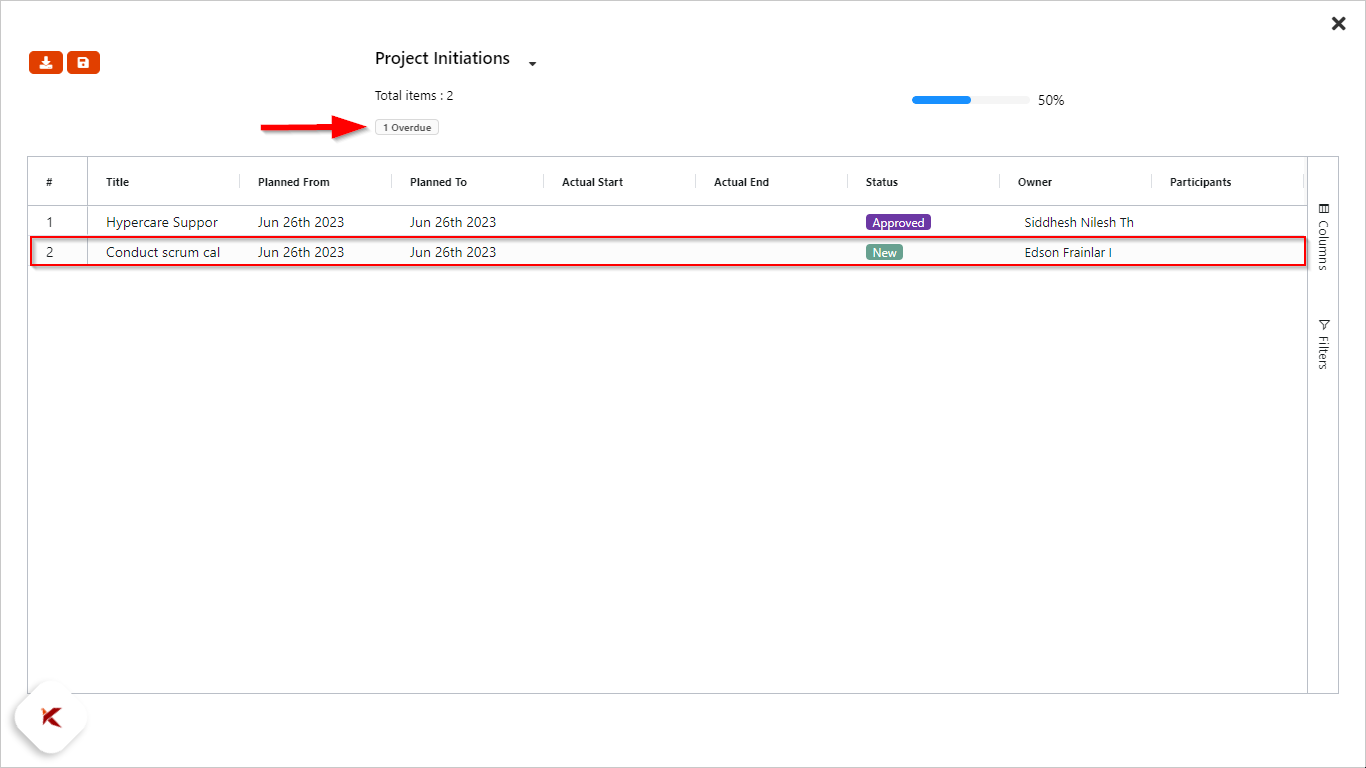

Easy deletion
- User can delete a board any numbers of time, by clicking the “delete” button (1) and to delete a task, click the “delete” button (2).
